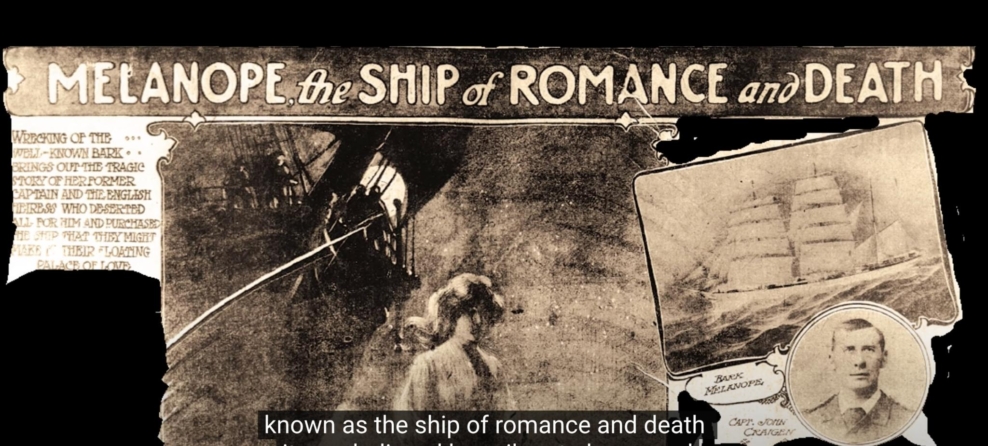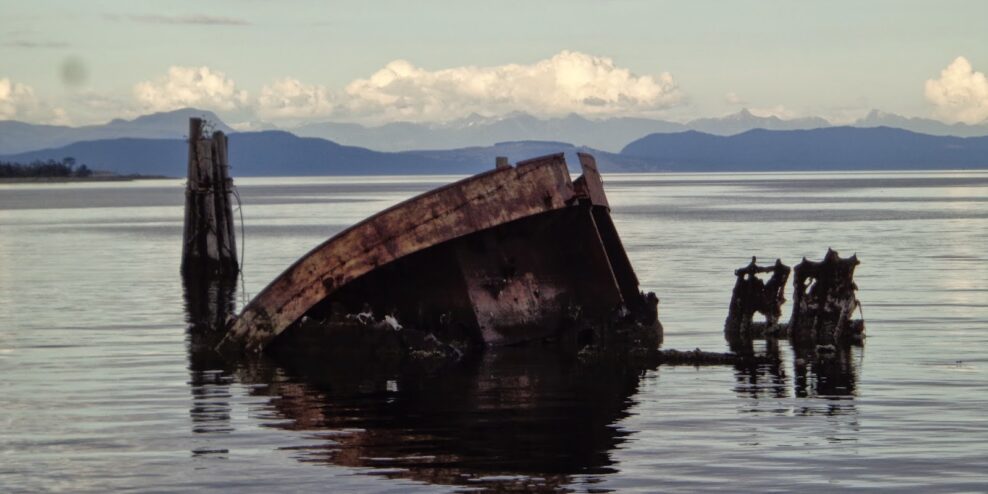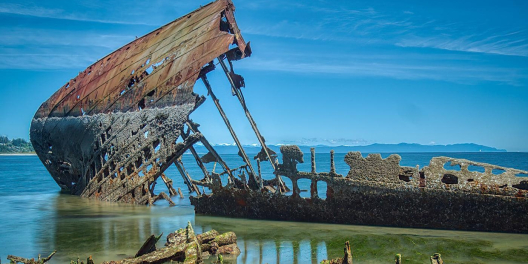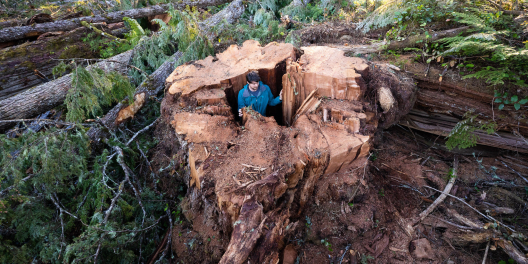Have you ever happened upon a shipwreck?
Marvellous, mysterious things they are, even in broad daylight!
Royston plays host to a lot of wrecked ships, but what exactly brought them here?
In the early 20th century, the logging industry was booming around Comox Harbour mid-Vancouver Island, as it was in many frontier towns of the Pacific Northwest. But a logging boom can quickly go bust if you can’t turn your timber into lumber quickly and cheaply.
At the time, getting logs to the mill faced a lot of challenges in British Columbia, particularly further north on VanIse. Unpredictable weather and rough waters took a toll on ships and their crews alike.
What they needed was a breakwater to calm the sometimes treacherous waters of Comox Harbor, and they needed one fast. Decommissioned ships could maybe be the solution – and so they sunk the first of many ships that would act as a foundation for a breakwater. Eventually, a fleet of 14 ships was deliberately sunk – including some historic ships – and the makeshift breakwater protected the harbour from surging seas and vicious winds.
Over a few decades, ships that no longer served their sea-faring purpose were towed out into Comox Harbour, drilled full of holes, and strategically sunk. They were twice-retired.
In total, there were three frigates, two destroyers, two whalers, two three-masted Cape Horn windjammers, two lumber carriers, a steel case-oil freighter, and three steam tugs. Their wrecks acted to calm the waters churned up by the strong east winds, so log-filled ships could better navigate to the mills on the mainland.

One of the apply named Ghost Ships was the Melanope, a rare iron-hulled, three-masted windjammer constructed in Liverpool in 1896. Known as the “ship of romance and death,” sailors believed the ship was cursed by an old woman stowaway who was forced to walk the plank after being discovered.
The curse haunted the ship. Before being scuttled in Royston, the Melanope endured one strange accident after another while working as everything from an immigrant ship to a railway coal barge, hauling cargo to Australia and rice from Asia in between.
Eventually, the mills that the breakwater protected shut down, but the Ghost Ships remain, becoming a landmark and tourist destination even though their initial purpose has faded.
A decade ago, the provincial government protected the ship graveyard under the British Columbia Heritage Conservation Act. Status as a registered archaeological site makes it illegal for scavengers to take any souvenirs from the ships, while at the same time keeping the current state of the wrecks intact to allow for research.
But researchers have to work fast – as with most ships, these wrecks will eventually get swallowed up and eaten by the elements.
Today, more than half a century later, the shipwrecks sit, rusting and decaying along the breakwater, slowly being eaten away by salt and sea microbes.
The tale of the Ghost Ships mirrors VanIsle’s history. An industrial legacy transformed into a go-to destination for divers and kayakers to explore.









